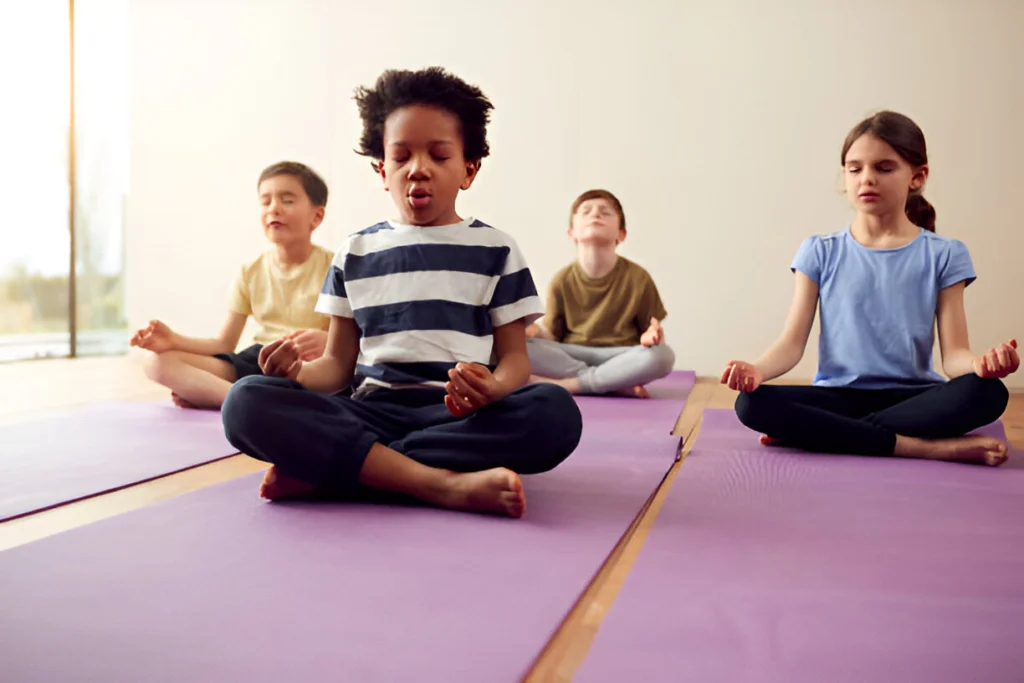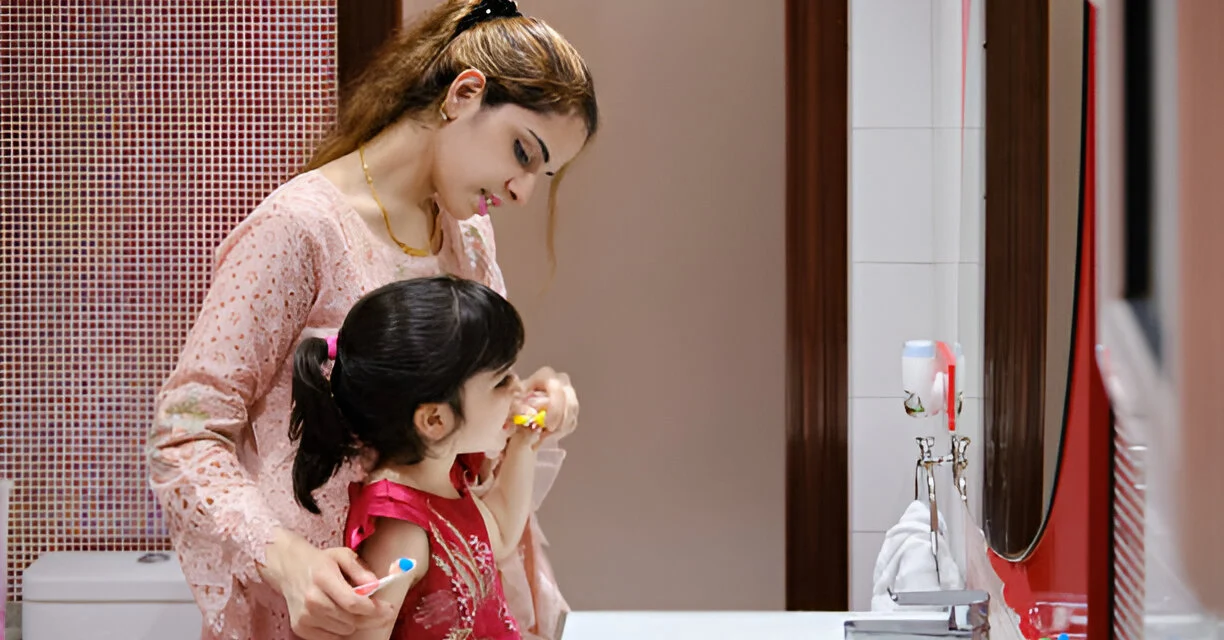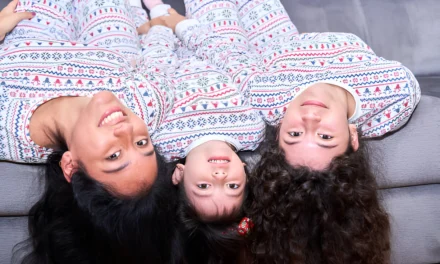As the sun rose, 9-year-old Emma bounded out of bed, eager to start her day. She knew exactly what to do – brush her teeth, get dressed, and head downstairs for a healthy breakfast with her family. This consistent routine not only provided a sense of structure and security but also set the stage for a productive and fulfilling day. Positive routines like Emma’s can have a profound impact on a child’s overall well-being and happiness1.
In today’s fast-paced world, establishing positive routines for your children can be a game-changer. These routines help children manage stress more effectively, sleep better, eat healthier, and stay active1. By creating a predictable and consistent environment, you can foster a sense of security and stability that allows your little ones to thrive2.
Developing positive routines is not just about creating order; it’s about cultivating habits that support your child’s physical, emotional, and cognitive well-being. From regular bedtime rituals to engaging after-school activities, these routines can become the foundation for a happier, healthier childhood13.
Key Takeaways
- Positive routines help children manage stress, sleep better, and adopt healthy habits.
- Consistent routines provide a sense of security and stability, allowing children to thrive.
- Routines support a child’s physical, emotional, and cognitive well-being.
- Bedtime rituals and engaging after-school activities are examples of positive routines.
- Establishing positive routines can be a game-changer for a child’s overall happiness and well-being.
Upgrade Your Environment and Change Your Routine
Changing your environment and routine can help break links with the past and create a fresh start, promoting a positive mindset4. Familiar activities can provide comfort for both adults and children during challenging and uncertain times4. Children feel more confident and secure when daily activities are predictable and familiar4.
Schedules and routines in the group care setting and at home help children feel in control of their environment, safe, secure, and comfortable.
When you experience a setback, one of the simplest things you can do is make a minor change to your environment and routine. This can help you move forward and cultivate a more positive outlook4. Routines and schedules aid in engaging children in learning and activities4.
When infants and toddlers participate in familiar activities and routines, they develop relationships with the people they interact with.
4 Engaging, predictable environments and positive adult-child interactions are crucial for promoting children’s social and emotional development4. Following clear and simple schedules and routines is essential for supporting children’s development and preventing challenging behaviors4. Families can benefit from breaking down tasks into steps to create routines.
| Environment | Routine |
|---|---|
| 5 Many factors influence children’s behavior based on their environment5. Creating safe spaces at home and outdoors can promote positive behavior. | 4 Reviewing schedules with children helps them understand what comes next and fosters predictability4. Providing choices within routines enhances children’s independence and engagement. |
5 Altering the seating arrangements on journeys can influence behavior5. Music can be used to change the environment during car trips to manage behavior5. Encouraging quiet, calming activities before bedtime can lead to better behavior5.
Changing routines like grocery shopping after naps or starting bath time earlier can impact behavior.
“Schedules represent the big picture, while routines outline the steps needed to complete each activity.”4
4 When programs start back up, re-teaching and reminding children of schedules and routines using visuals can help them readjust4. Positive, descriptive feedback helps reinforce children’s attempts or successes in following routines.
Incorporate Meditation into Your Daily Routine

Adding meditation to your daily life can greatly improve your well-being. Research shows that regular meditation can change your brain for the better. It can make you happier, less stressed, and boost your immune system6. Plus, you don’t need a lot of time – just 2 minutes a day can make a big difference.
Cultivate Mindfulness and Focus
Starting a short meditation practice can help you stay calm and focused. Studies show that teaching mindfulness to kids can help them focus better and control themselves7. By taking a few minutes each day to meditate, you can handle life’s challenges more easily.
Mindfulness can also help kids do better in school and solve problems better7. Adding meditation to your daily routine can help your family become more confident and have better relationships.
| Benefits of Meditation | Impact on Daily Life |
|---|---|
| Increased happiness | Reduced stress and anxiety |
| Improved immune function | Enhanced focus and attention |
| Greater self-awareness | Improved conflict resolution skills |
By setting aside a few minutes each day for meditation, you can change your brain for the better. You’ll feel happier, less stressed, and healthier. Start practicing mindfulness today and see the positive changes in your life.
Watch Something Funny Regularly

Adding humor to your daily life can instantly make you feel better. Studies show that a funny video or a chat with a friend can really improve how well you think and feel8.
Laughter is great for your mind and body. Watching something funny often can lower stress, help you focus, and even make your immune system stronger8.
Humor in your routine does more than just entertain you. It trains your brain to see the good in things. This can make you happier, more resilient, and more hopeful8.
There’s lots of funny or calming content out there. Try ASMR, nature scenes, or animal videos to see what lifts your mood8. Find what makes you laugh or relax the most.
| Benefit | Description |
|---|---|
| Stress Reduction | Watching calming videos can help you unwind and reduce stress levels8. |
| Improved Focus and Concentration | Relaxing the mind through calming videos can enhance your focus upon returning to tasks8. |
| Enhanced Mood and Emotional Well-being | Positive, humor-filled content can have a beneficial impact on your mood and emotional balance8. |
| Increased Mindfulness and Self-awareness | Watching calming videos can encourage mindfulness and self-awareness, leading to better emotional management8. |
| Reduced Physical Tension | Relaxing videos can help you unwind and reduce physical discomfort8. |
Making humor and calm a part of your day can really improve your life. Try different content to find what makes you laugh and relax. This simple change can make a big difference in how you feel.
Make Exercise a Part of Your Routine
Adding regular exercise to your daily routine can greatly improve your mood and happiness. Just a 20-minute walk can make a big difference. Regular physical activity helps reduce stress, anxiety, and depression. This makes you feel better both mentally and physically.
The U.S. Department of Health and Human Services says kids and teens should do 60 minutes or more of activity daily9. Preschoolers need active play all day, aiming for 3 hours of activity9. Toddlers should be active for at least 3 hours a day, including different types of activity9.
To make exercise a regular part of your routine, try adding it to your daily life. Take a walk during lunch or do exercises while watching TV. Making physical activity a priority can greatly improve your mood and happiness.
| Activity | Recommended Time |
|---|---|
| School-age kids and teens (6-17 years) | 60 minutes or more of moderate to vigorous physical activity daily9 |
| Preschoolers | 3 hours each day of light, moderate, and vigorous activities9 |
| Toddlers | At least 3 hours a day, including light activity, active play, and energetic movement9 |
The American Academy of Pediatrics (AAP) says kids aged 2 to 5 should not have more than 1 hour of screen time daily9. Kids under 3 should not be inactive for more than 1 hour, except when sleeping9. School-age kids should not be inactive for more than 2 hours at a time9.
Regular exercise and physical activity offer many benefits for kids. They help build strong muscles and bones, keep bodies lean, and lower the risk of obesity and type 2 diabetes. They also improve sleep, school performance, and reduce depression rates9.
“Incorporating physical activity into your daily routine can have a profound impact on your mood and overall sense of happiness.”
Positive Routines for Children
Creating positive routines for kids can greatly improve their well-being10. Studies show that regular morning and bedtime routines help kids feel more secure and less likely to act out10. These routines also help kids develop good habits and feel safe.
Children who follow routines better understand and manage their emotions11. This makes them less stressed and better at handling challenges11. Routines also help kids feel in control and build strong family bonds, boosting their confidence and independence11.
Parents can help by letting kids help with daily tasks and checking in with them in the morning11. Giving them choices in routines and praising their efforts can also make a big difference11.
The Benefits of Positive Routines for Children
- Provide comfort and safety, helping children learn self-control12
- Reduce power struggles by allowing children to anticipate and participate in decision-making12
- Guide children’s actions toward specific goals related to health, safety, and positive behavior12
- Support social skill development through interactions like greetings, taking turns, and sharing during play and meal times12
- Assist children with transitions between activities, making changes easier to cope with12
- Positively impact parental happiness through the predictability and structure of family life12
- Offer valuable learning opportunities for children to develop self-confidence, curiosity, social skills, and communication skills through everyday interactions12
- Build relationships and enhance overall development through repetition12
By setting up positive routines, parents can help their kids do well, reduce stress, and sleep better10. Positive routines are key for kids’ social and emotional growth and overall health.
Practice Gratitude as a Family
Gratitude practice trains the brain to see the good in life. It makes us feel better and connect more with our family. Research from UC Davis psychologist Robert Emmons shows journaling about gratitude boosts well-being13. “Thankful” by Eileen Spinelli is a great book to teach kids about being thankful13.
Teaching kids to make thank you cards or write letters helps them appreciate more13. Activities like gratitude journaling and making thank you cards for kids help them learn gratitude13. Showing kids gratitude in everyday life, like thanking postal carriers, can make them more positive and resilient13.
Gratitude is good for kids’ health and happiness14. It makes them feel better and sleep better, and can even help with pain14. Saying or writing thank you can make kids feel stronger and more confident14. Helping kids give back, like volunteering, teaches them important life skills14. Just a few minutes of gratitude practice a day can help families deal with stress better14.
Studies show that being grateful makes us happier15. Sharing gratitude as a family can strengthen bonds15. Activities like sharing warm fuzzies and using a gratitude jar can make family members more thankful15. Keeping a gratitude journal, especially with your family, is a great way to practice15. Giving to others can teach kids kindness and make them happier15. There are many resources, like podcasts and articles, to help families practice gratitude15.
| Benefits of Gratitude Practice | Impact on Children | Family Gratitude Activities |
|---|---|---|
| – Improves overall well-being13 – Promotes positive outlook and reduces stress14 – Increases happiness and life satisfaction15 | – Enhances physical and emotional health14 – Boosts self-esteem and positive social behaviors14 – Develops a sense of purpose and compassion14 | – Gratitude journaling and thank you cards13 – Sharing warm fuzzies and gratitude jar/board15 – Volunteering and giving to others15 |
Gratitude is great for both kids and adults, making relationships stronger and life more positive13. Starting a gratitude routine with your family can make your home happier and more connected.
Plan Activities to Look Forward To
Having something to look forward to can really lift your mood. Planning activities and experiences you’re excited about can make you feel more positive. It gives you something to look forward to, which can make you happier and feel better overall16.
It could be a dinner with friends, a new book, or a trip. Scheduling fun activities can change your daily life for the better. Kids and adults both like knowing what’s next17. Planning things you’re excited about can add excitement and purpose to your life.
Adding activities you love to your routine can fight off daily stress18. These events give you something to look forward to and offer a break from the usual. This can make you more positive and excited about life.
| Activity | Frequency | Anticipated Benefit |
|---|---|---|
| Dinner with Friends | Monthly | Strengthens social connections and boosts mood |
| Reading a New Book | Weekly | Provides mental stimulation and relaxation |
| Weekend Getaway | Quarterly | Promotes rest, rejuvenation, and new experiences |
By planning activities you’re excited about, you can become more positive. This can make you happier and add excitement to your daily life161718.
Find Positive Interpretations in Negative Experiences
Humans have a special gift to find meaning in life’s events. By choosing a positive interpretation of a negative experience, you can feel more motivated, perform better, and be happier19. Looking for the good in tough times helps you stay optimistic and strong.
Don’t jump to the worst conclusion when things go wrong. Instead, be curious and open-minded. Ask yourself, “How can I see this in a better way?” Changing how you view things can lift your spirits and boost your motivation and performance19.
For instance, if you get tough feedback at work, see it as a chance to get better. Or, if a plan doesn’t work out, it might lead to new discoveries. By changing how you see things, you can find happiness and stay strong.
“The greatest weapon against stress is our ability to choose one thought over another.” – William James
Remember, negative experiences are part of life, but how you react matters. Make it a habit to look for the good, and you’ll see your motivation, performance, and happiness grow.
Spend Money on Experiences
Studies show that spending on experiences, like travel or classes, makes us happier and more connected20. These moments create lasting memories and bring more joy than owning things21. They help us feel connected to others, which boosts our overall happiness and satisfaction with life.
Doing things we love or are good at can lift our mood by making us feel confident and satisfied21. Even small joys, like dinner with friends or starting a new hobby, can make us happier and more optimistic21.
When we face tough times, choosing to see the positive side can improve our motivation and performance21. Keeping a journal of positive moments can also lift our spirits and keep us motivated21.
By focusing on spending on experiences, we can feel more connected and happy21. Whether it’s a family trip, a class that sparks your passion, or time with friends, investing in experiences can greatly improve our well-being and life satisfaction.
Engage in Activities You Enjoy or Are Good At
Doing things you love or are good at can really improve your life. Using your strengths and making time for hobbies can make you happier. It also makes you feel more confident and in control22.
When you do things that match your interests, you feel fully engaged. This feeling can make you happier and more confident. It gives you a sense of purpose22.
Think about what you enjoy doing most. It could be sports, art, or learning new things. Make sure to set aside time for these activities23.
Doing what you’re good at can also reduce stress. It gives you a break from daily life. This is especially helpful for parents who have a lot on their plates23.
It’s not just about the activity. It’s about feeling accomplished and enjoying it. Use your strengths to find activities that make you feel alive22.
| Activity | Enjoyment Level | Strengths Utilized |
|---|---|---|
| Painting | 8/10 | Creativity, attention to detail |
| Hiking | 9/10 | Endurance, appreciation for nature |
| Cooking | 7/10 | Multitasking, problem-solving |
| Reading | 8/10 | Analytical thinking, imagination |
By doing what you enjoy or are good at, you can feel happier and more confident. This can improve your life in many ways2223.
Create and Review Your Meaning Markers
Keeping a record of positive feedback and meaningful experiences can boost your mood and motivation24. Looking back at your “meaning markers” helps you see how you’ve made a difference. It keeps your mind positive and your sense of purpose strong.
It’s easy to start a “meaning markers” collection. Just jot down any kind words or thanks you get from others25. Also, write down your personal wins and moments that felt really good.
When you need a pick-me-up, go back to your meaning markers24. It’s great for tough times or when you’re feeling down. Remembering these good moments can make you feel motivated again.
Getting into the habit of recording and looking at your meaning markers can keep you positive and focused25. Enjoy these special moments and let them boost your confidence and self-worth.
| Meaning Markers | Positive Impact |
|---|---|
| Positive feedback from a client | Reinforces your value and the quality of your work |
| Appreciation from a colleague | Boosts your sense of belonging and contribution to the team |
| Reaching a personal goal | Instills a sense of pride and accomplishment |
| Heartfelt thank-you from a loved one | Strengthens your relationships and sense of purpose |
By making and checking your meaning markers often, you can stay positive, motivated, and find happiness in your journey242526.
“Keeping a record of your meaning markers is like storing up emotional fuel for the days when you need it most.”
Conclusion
Creating positive routines can greatly improve your children’s happiness and health27. Adding activities like meditation, exercise, and gratitude to your day can make your home happier and more secure28. This helps your kids grow up to be successful and fulfilled28.
Even small changes can make a big difference in your home’s happiness27. Starting a routine might seem hard, but it’s worth it for raising responsible kids27. By focusing on positive habits, you give your children the best chance to succeed.
Take a moment to review your family’s routines and make any needed changes28. Doing this will make your home a more positive and enriching place for your kids28. You’ll see their happiness and well-being improve greatly.
FAQ
What are the benefits of positive routines for children?
How can changing your environment and routine help create a positive mindset?
What are the benefits of incorporating meditation into your daily routine?
How can humor in your daily routine provide cognitive and mood benefits?
How can exercise impact your mood and overall happiness?
How do positive routines for children impact their development and behavior?
How can gratitude practices as a family enhance well-being?
How can planning activities you’re excited about improve your overall happiness?
How can finding positive interpretations in negative experiences impact your mindset and performance?
How does spending money on experiences rather than material goods impact happiness and well-being?
How can engaging in activities you enjoy or are good at impact your mood and self-confidence?
How can reviewing your “meaning markers” document help sustain a positive mindset?
Source Links
- The Importance of Family Routines
- Family routines: how and why they work
- Why Are Routines Important for Children? – Montessori Academy
- The Importance of Schedules and Routines | ECLKC
- Changing the environment: positive behaviour strategy
- Embracing Daily Routines for Children’s Mental Health
- Mindfulness for Kids
- Calming Dismissal Video Ideas – Fair Winds Teaching
- Kids and Exercise (for Parents)
- Routines
- Children and Routines: A Positive Relationship
- Creating Routines for Love and Learning
- How To Help Kids Practice Gratitude — Better Kids
- How to Practice Gratitude & Improve Your Family’s Mental Health
- A Grateful Family is a Happy Family: 5 Gratitude Practices | Sunshine Parenting
- How to Balance the Need for Routines with Helping Kids Be Flexible — Child Development and Parent Consultation
- How to create a daily routine for kids – Children’s Health
- Routines for Kids
- Why Structure and Consistency Are Important For Kids • Kids Creek Therapy
- Tips for Spending Quality Time With Your Child
- The Daily Routine Backed by Science that Will Make You a Happier Person
- The Environment: Schedules and Routines
- Benefits of Establishing a Daily Routine – Effective School Solutions
- Reward charts: positive behaviour strategy
- Practical Daily Schedules For Kids That Make Life Easier – Raising Kids With Purpose
- 5 Universal Practices to Support Young Children’s Positive Behavior – Brookes Blog
- Daily Routine For Kids: Importance, Challenges And Solutions
- Ten Benefits of Routine for Children – Psychologist Gold Coast – CBT Professionals





